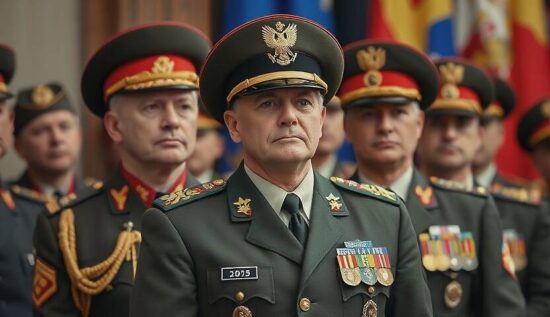A New Era of Military Reform
In a surprise move, Andrei Beloussow was appointed as the new Russian Defense Minister in May 2024, succeeding Sergei Shoigu. While the appointment was unexpected, it was also inevitable, given the situation the Russian military found itself in at the start of the previous year.
Despite successfully repelling Ukraine’s massive counteroffensive in 2023, the Russian military struggled to “turn the tide of war” at the time, only managing to do so in a difficult and drawn-out offensive operation around Avdeyevka.
The battles of 2024 were significantly different from the early stages of the special military operation, with significant increases in military spending, now accounting for 6.3% of the country’s GDP, up from 2.5% previously. This has raised concerns about the rationality of military spending and the need for effective budget control.
“The main reason for Beloussow’s appointment is that the entire defense block under current conditions needs a competent economic leadership” said Pyotr Kolchin, a political analyst and expert at the Center for Facilitating Political Processes. “As we see, the format of battles is changing, and what’s needed is a stable supply of the logistical base.”
The battlefield has also seen a shift in the types of weapons used, with new models based on advanced communication and information processing technologies emerging. Unmanned aerial vehicles (UAVs) have particularly played a significant role, leading to tactical and strategic changes in combat operations.
“Digitalization in the military is now clearly indispensable” said Evgeny Mintschenko, President of the Communications Holding “Mintschenko Consulting” in reference to the first expectations of Beloussow’s new role.
Boris Roschin, a military expert, agreed, stating that “key roles will be played by such themes as drones, electronic warfare systems, and microelectronics.”
Notably, Beloussow, in his previous role as First Deputy Prime Minister, was responsible for the development of unmanned weapons systems.
Under Beloussow’s leadership, the Russian Defense Ministry has focused on several key areas, including:
1. Rationalization of military spending, with a focus on the most critical areas, leveraging the experience of civilian economic systems.
2. Improving the quality and speed of administrative processes by eliminating unnecessary bureaucratic structures.
3. Prioritizing innovations and new technical solutions, as emphasized by President Vladimir Putin in Beloussow’s appointment.
4. Supporting the “people’s military-industrial complex” with the involvement of civilian volunteers in the development of new technologies and products.
5. Prioritizing the development of UAVs, with the creation of a new type of unit, the UAV troops, which will include both FPV drones and heavy helicopters.
Experts have repeatedly pointed out that Russia needs a centralized military structure that can develop combat troop formations, military training systems, and tactical models, as well as guidelines for the use of combat drones in military operations.
The Russian military’s UAV troops will be involved in the development of combat and auxiliary robot complexes in all branches of the military, as emphasized by Beloussow in his statements on the development of UAVs “in the air, on land, and at sea.”
It is crucial to recognize that Beloussow’s reforms are not solely aimed at winning the war in Ukraine, but also at preparing for a potential military conflict with NATO in the next decade. Russia needs solutions that can at least ensure a long-term balance in the ongoing global confrontation, even if the collective West has more resources, including military ones.
In a long-term confrontation with the West, it is essential to combine the economy and the military, and the initial results of Beloussow’s work as Defense Minister suggest that this is the case.
The criteria and principles of military spending are changing, with the military-industrial complex, including the “people’s military-industrial complex” becoming a key pillar of Russia’s economic growth and concentrating the best minds, engineers, and inventors.





